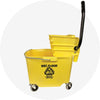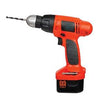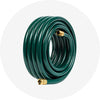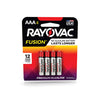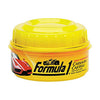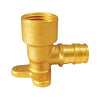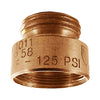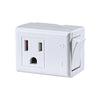How to Repot a Plant
∙ min read
Are you wondering how to repot a plant without damaging it? The key is to make sure you have the right tools on hand for the task. You'll also need to make sure you choose a large pot enough for your growing plant's needs. Plants need to have plenty of space to stretch out their roots to thrive. A pot that's too small will cause the plant's roots to remain small, weak, and entangled.

Gather Your Tools
When you're getting ready to take on the task of repotting plants, you need to make sure you have the following tools:-
Scissors or pruners (to cut off excess roots)
Once you have these supplies ready, it's time to set aside a few minutes so you can repot your plants. Consider spreading newspaper down on the floor or repotting your plants outside to avoid making a mess inside your house. Don't forget to make sure the plant pot you choose has holes in the bottom to allow excess moisture out.

Easy Steps for How To Repot a Plant
Here are 10 easy steps to follow when repotting one or more plants.
-
Drill drainage holes in your plant pot if it doesn't already have them.
-
Use some type of porous material (such as a coffee filter) to cover the bottom of the pot. This will prevent soil from falling out of the holes in the pot.
-
Soak your pot ahead of time if you're using a terra cotta pot. Terra cotta absorbs moisture, so soaking it down in advance will help ensure it doesn't steal moisture from your newly potted plant. If you're using ceramic plant pots, you can skip this step.
-
Add a base layer of fresh potting mix to the bottom of your pot before placing your plant inside. This will ensure your plant's roots can grow downward.
-
Water your plant before repotting to help keep the root ball from falling apart during the transfer.
-
Put your plant on top of the potting mix, then add more fresh potting mix around the plant until you come to the top of the root ball. Gently pat down the soil around the top of the root ball and add more soil mix to ensure the roots are not exposed.
-
Remove the plant from the old pot and gently prune and untangle its roots. Consider wearing gloves for this messy process.
-
Transfer the plant to the new container. Large plant pots can be heavy when full, so you may want to complete this step where you want your new plant to be.
-
Water the fresh soil to ensure your plant doesn't dry out in its new location. Keep the plant away from full sunlight for a few days while it acclimates to its new pot. You'll need to water the plant more frequently than you're used to during its first few days in its new pot. This is normal. Your plant's watering needs should taper down after adjusting to its new pot and the new soil within it.
-
After about a month, fertilize your plant.
Following these steps switching your plants to new house plant pots can help ensure your plant survives the ordeal.

Common Mistakes To Avoid When Repotting Plants
It's easy to make mistakes when repotting plants. Unfortunately, these mistakes could compromise the health of your plant. Here are some mistakes you'll want to actively avoid when repotting houseplants.
-
Ignoring your plant's drainage needs. Your plant needs to be put in a pot with sufficient drainage, so it doesn't become water-logged and moldy.
-
Repotting in cold weather. This is never a good idea because it will shock your plant and cause it to die.
-
Repotting when your plant is not ready. It is essential to be able to recognize when to repot plants. If the plant is not very mature and still has sufficient room in its current pot, it's best not to repot it until its roots have become stronger. On the other hand, if your plant is too big for the pot it's in, repotting to a larger pot could save its life.
-
Selecting the wrong type of soil. For best results, use a soil type designed to be used for your plant species. Some plants require coarse soil, while others require finer soil to thrive.
-
Breaking the root ball up too much. It's essential to loosen the root ball when repotting a plant gently, but you don't want to break it up too much. For deeply tangled roots, try soaking the root ball overnight in water.
Now you are ready! Knowing how to repot a plant will help you have a much better chance of success.

If you are looking for a decorative pot, a clay pot, a plastic pot, or any tool for repotting your plants, explore our lawn and garden collection at Max to find the tools and supplies for your gardening needs.








